Leyendo con Pictogramas
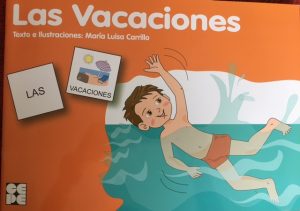 Another of my purchases in Bilbao was Las vacaciones which comes from a series called Colección Pictogramas described the publisher, CEPE (Ciencias de la Educación Preescolar y Especial) as forming part of a series “para favorecer la integración de los alumnos con n.e.e. [Necesidades Educativas Especiales], sobre todo los que presentan dificultades lectoras y/o de comprensión” (to support the integration of students with SEND, especially those who have difficulties with reading and/or comprehension.)
Another of my purchases in Bilbao was Las vacaciones which comes from a series called Colección Pictogramas described the publisher, CEPE (Ciencias de la Educación Preescolar y Especial) as forming part of a series “para favorecer la integración de los alumnos con n.e.e. [Necesidades Educativas Especiales], sobre todo los que presentan dificultades lectoras y/o de comprensión” (to support the integration of students with SEND, especially those who have difficulties with reading and/or comprehension.)
I was drawn to the book as it has a very simple text and is on the subject of holidays and the seaside which one of the topics covered by Y1 at my school. However the thing that drew me most was that the text is accompanied by pictograms, small images to support understanding of the text.
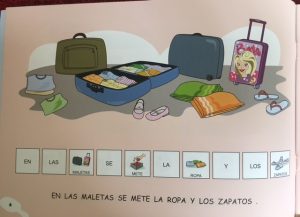 |
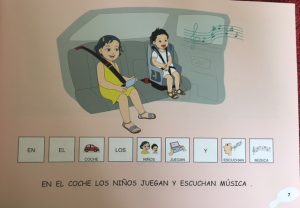 |
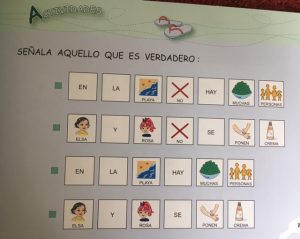 |
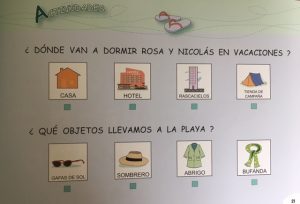 |
At both of my schools we use pictograms or widgets for visual timetables to support all pupils in following the flow of the day as well as on key rings for individual pupils who use them to communicate. At one of my schools we use Communication in Print (now called InPrint3) just as Las Vacaciones does to support reading and comprehension across the curriculum. I’ve used it in RE lessons to retell stories from the Bible and Quran with success but have found it more fiddly with Spanish as it doesn’t recognise the words. A while back Clare Seccombe talked about finding a Spanish version and when I bought the book, I had this in mind but couldn’t find the name of it. Fortunately, she wrote a post about it a few days ago!
Pictotraductor will enable me to translate resources to support my pupils, but also to support non specialists who deliver Spanish lessons, much as the resource below helped the Y1 teachers to use the story of Ricitos de Oro until they discovered the Pictocuentos version (and subsequently enjoyed Caperucita Roja and El Patito Feo!)
And here is a video version of the story using pictograms as the characters and activities using pictograms that I found on this blog that shares resources for ‘Educación Especial’. In this post he recommends using Adapro or AraWord (with the library of images from ARASAAC), both of which are freely downloadable from SourceForge. I do think that Pictotraductor looks easier to use as you don’t have to be at a specific computer but you need to be online to use it whereas the options above are downloaded programmes on your computer so could be done on a train for example.
I wish I’d bought more of the series of books but I’ve found the website and catalogue online so will perhaps get more when I’m next in Spain or persuade someone to take delivery and post them to me 😉



